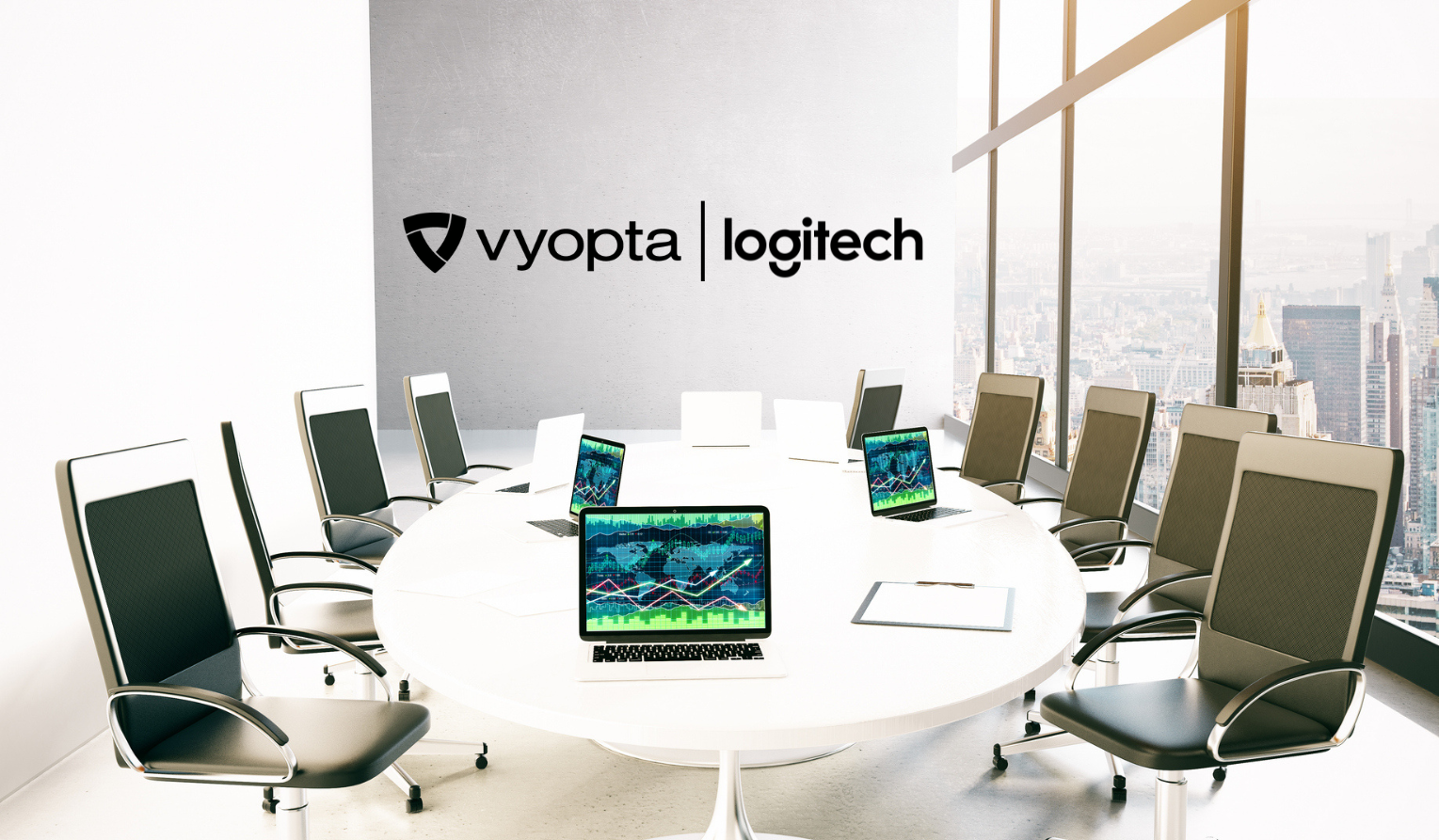.png)
Finding and maintaining the new “safe optimal”
Prior to coronavirus, innovative IT and Workplace teams were focused on maximizing capacity and cutting real estate costs. Then the world changed. For the first time, IT and Workplace teams are not only thinking about the ROI of their space and technology, but also the safety of their employees by trying to avoid too much usage and occupancy. Organizations everywhere are scrambling to find what the new “safe optimal” – enough occupancy and collaboration that keeps the business moving forward, but not so much that it poses social distancing risks – looks like in this new world.
PLANNING IN THE NEW WORLD
So what type of future should you plan towards? Ask former Google CEO Eric Schmidt1 and you’ll hear about the pandemic increasing demand for corporate real estate to promote social distancing. A Gartner survey2 notes 74% CFOs are planning on reducing real estate in some capacity because so many people are working from home. Yet, long-term visionaries like Microsoft CEO Satya Nadela are already warning3 of embracing remote work permanently.
Like most things in life, the reality will likely be more of nuanced middle ground. For some portions of your business, less real estate may make sense. For a lot of your business, it’s likely the office will need to look different and could even result in more real estate. Throw into that mix the fact that collaboration with remote employees will be critical (we’ve got you covered there too), and the situation becomes incredibly complex. So how do you find the right balance and maintain the new “safe optimal” amidst this unknown and nuanced future? Let’s start with what not to do.
FAILURES OF COMMON APPROACHES
The responses to this new world are as varied as the projections, but here are three common approaches we are seeing and some pitfalls you need to consider.
One-size-fits-all “fast fixes” with no measurement. Blanket tactics like removing chairs in conference/huddle rooms and customizing strict rules for booking spaces are likely a positive step in the right direction, but how do you know it’s working? Making sure employees are in compliance to your guidelines is essential to maintaining a safe workspace and mitigating risk. Additionally, the fast fixes can be a risk to potentially stifle the very collaboration that folks came back to the office for, so measurement will be critical to strike a safe balance.
Automation as the “be all end all”. Even the most complex solutions to automatically de-book spaces after a period of inactivity can leave a false sense of attainment when it comes to safety and optimization. At their best, these solutions help free up space right now, but obviously the need to schedule spaces goes beyond the here and now. The “no-show” is the tip of the iceberg for space inefficiencies – even more important to consider are: low occupancy (and now too high of occupancy!), improper tech usage, and length of meeting.
Waiting until the dust settles. Yes, we are in uncharted territory and implementing the “wrong” strategy is a serious concern, but inaction has a significant opportunity cost. From Gensler’s US Work From Home Survey4 we know that 88% of US workers want to return to the office in some capacity. With the current economic situation, enabling employees to work and collaborate as effectively as possible will be paramount for business success.
So where do you start? According to Gensler’s survey, the #1 reason employees want to come back to the office is to schedule meetings with colleagues.
Understanding the intersection of scheduling and workspace usage data is critical to finding and maintaining the new “safe optimal” and Vyopta’s brand new Bookings dataset in Workspace Insights delivers just that.

NEW WAYS VYOPTA CAN HELP YOU RE-ENTER SAFER WITH DATA
Vyopta’s Workspace Insights product has been used by leading organizations to help plan and optimize workspaces for years. Now we are doubling down on features to help you

Planning with data that’s flexible. The reality is that this new world is changing rapidly. One-size-fits-all or static approaches will fail at the worst and be sub-optimal at best. Vyopta’s Workspace Insights model brings user attributes, collaboration activity, and calendar booking data into one flexible, customizable, and visual experience that helps you answer questions like:
- What locations and teams are “safest” to re-enter first with respect to risky booking behavior (meeting capacity)? Which are the biggest risk?
- Which locations and teams are actually using in-person collaboration spaces the most regardless of booking activity and does that warrant a change in workspace design?
- How do the answers to the above questions change when filtered by attributes like floor, building, campus, etc. for locations and department, function and location for teams?
Proactively avoiding social distancing risks with actionable data. The best issues are the ones you can avoid. One of the best ways to ensure good booking behavior – and therefore a safer office experience – is to ensure employees have the widest range of options to select from.
That means you’ll need to target inefficiencies to reduce including missed meetings, too long of bookings, improper tech usage, and meetings with too low (and now too high!) of a capacity. Workspace Insights’ analytics view can help understand both the systemic trends around each of these inefficiencies as well as actionable data down to the individual organizer level that makes reducing these inefficiencies easy and data-driven for your organization.

Quick win! It’s very likely your employees left recurring bookings on the calendar while forced to work from home. Filtering down to recurring bookings + organizer functions or geos that are not in initial re-entry waves will highlight bookings you can remove from the calendar to free up more space for first re-entry wave employees to book. With so much going on in the world, it’s understandable that your employees aren’t thinking of their existing bookings…we’re guilty of it too.

Ensuring compliance after-the-fact.
Even the perfect plan with elements to proactively avoid issues can be foiled by a few bad actors who aren’t following the rules. The new Bookings dataset allows you to understand precisely who is organizing meetings that aren’t following your organization’s occupancy guidance with occupancy readings that are precise, right down to the booking level – answering how full the room was during the scheduled meeting. You can also understand more systemic trends around compliance like which organizations/business units have the majority of these compliance violations and which locations are most affected by these issues.
CONCLUSION
The “safe optimal” is different for all organizations and even different for specific groups and geographies within companies. It’s a dynamic, changing new goal that needs to be monitored and the common approaches used today are leaving companies at risk. Vyopta’s Workspace Insights approach uniquely illuminates these insights in a model that’s easy to deploy and takes advantage of the hardware you already have. With so much unknown in the world right now, we believe quickly quantifying the intersection of space booking and usage can make a significant impact in making re-entry plans safer. We’d love to connect to see how we can help you and your organization.
Join us for a webinar titled Making the Office Safe for Today and Ready for Tomorrow to learn how you can optimize for performance, social-distancing compliance and user experience in the new workplace.

Nick.Wiik is a Senior Manager of Product Management at Vyopta. In his time there, he has played a critical role in launching the Collaboration Performance Management Suite of solutions and is currently the head of Workspace Insights product line which is focused on helping organizations leverage data-driven insights for workspace planning and improving employee experiences. Prior to Vyopta, Nick spent 5+ years at LinkedIn scaling the Talent Solutions business unit to be a leader in the talent acquisition software space. Nick holds a primary degree in Economics and a secondary degree in International Relations from Stanford University. .




